This was published 2 years ago
Green cities: 10 major cities embracing green space, sustainability and renewable energy
By Ute Junker
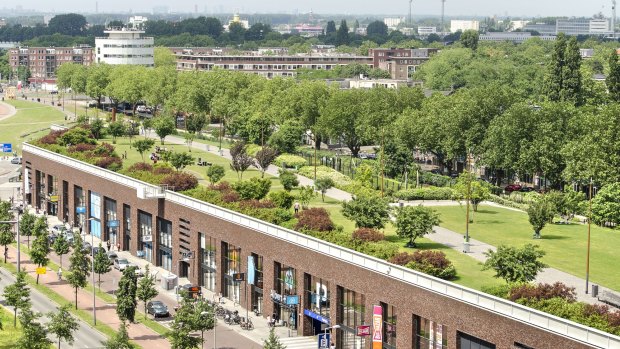
Dakpark in Rotterdam.Credit: iStock
To see Rotterdam's most interesting park, you have to look up. While the Dakpark is in many ways a typical stretch of urban greenery, studded with trees and vegetable gardens, where children splash in the water while their parents picnic, what makes it remarkable is its location: on top of a shopping centre.
The kilometre-long Dakpark is Europe's largest public roof park, and it is an example of the inventive thinking that has made Rotterdam one of the world's most sustainable cities.
As the world struggles to become more climate friendly, some cities are sprinting ahead. Increasingly, they are finding that their eco-friendly approaches are drawing more visitors, even when they aren't as eye-catching as rooftop parks or high-rise buildings covered in plants.
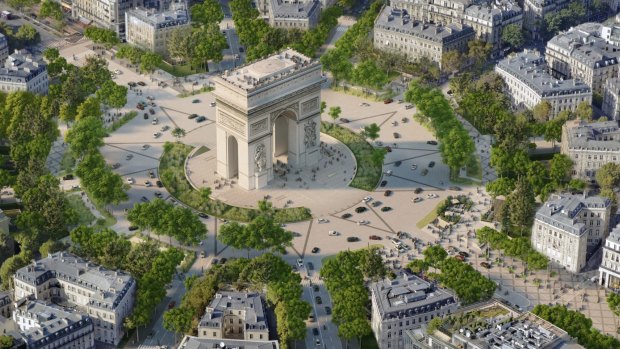
A citywide tree planting program will see half of Paris covered with planted areas by 2030.Credit: PCA-STREAM
After all, many of the measures that make a city more sustainable - planting more trees, reducing the number of cars, making its centre more walkable – also make it more pleasant to visit.
All of the cities in our list, from those in Scandinavia to Singapore, have taken a different road to going green. Some cities turbo-charged their efforts as part of an Olympics bid. For others, a sluggish economy and a resulting rise in the number of vacant buildings, created opportunities for experimentation that led to big results.
One thing is clear: compared with these pioneers, Australia has a long way to go (although a tip of the hat goes to Canberra, Hobart and Launceston, all powered by renewable energy).
Given that cities consume 78 per cent of the world's energy and produce more than 60 per cent of greenhouse gas emissions despite covering less than two per cent of the Earth's surface, it is worth supporting those places that are getting it right.
PARIS, FRANCE
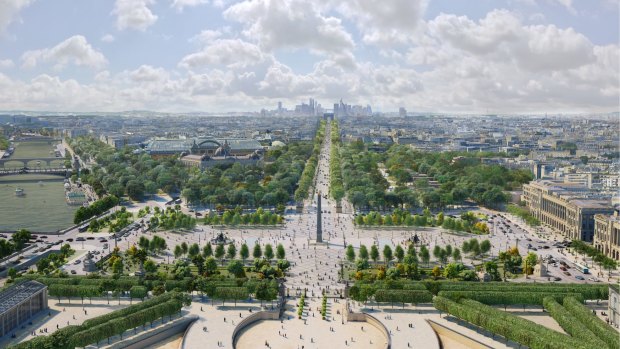
Credit: PCA-STREAM
THEN Since being elected mayor in 2014, Anne Hidalgo has announced a series of increasingly ambitious initiatives to make Paris more green, an approach that helped the city's successful bid for the 2024 Olympics (paris2024.org)
NOW Hidalgo has literally reshaped the streets of the city, introducing almost 150 kilometres of bike lanes and making some major thoroughfares car-free. Expect to see even fewer cars in the city in the future: diesel cars will be banned from 2024 and by 2030, the ban will extend to all petrol-driven cars.
GO GREEN Hire a bike (www.velib-metropole.fr) to explore some of the city's sustainability hubs. A baguette's toss from the Eiffel Tower is the world's largest urban rooftop farm, Nature Urbaine (nuparis.com), where you can join a yoga class, take a tour or eat farm-fresh at the onsite restaurant. For sustainable fashion, head to La Caserne (lacaserneparis.com) in the 19th arrondissement, a hub for eco-minded designers.
STILL TO FIX The Champs-Elysees is getting a €250 million post-Olympics makeover, with pedestrian areas and "tree tunnels", while a citywide tree planting program will see half of Paris covered with planted areas by 2030.
MORE en.parisinfo.com
COPENHAGEN, DENMARK
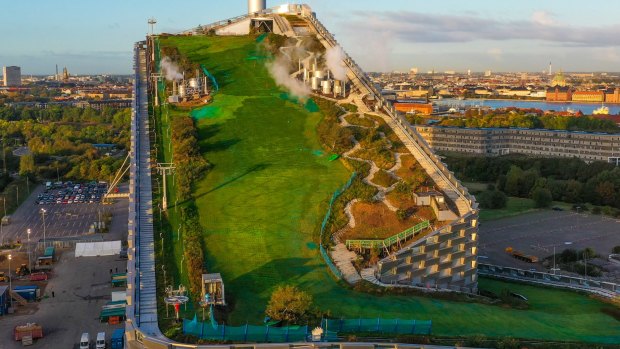
Credit: VisitCopenhagen
THEN It was the 1973 oil crisis that spurred the Danes to reevaluate their energy consumption and focus on sustainability. They are now among the world leaders in low-impact living.
NOW Copenhagen is famous as a cycling city, with more bicycles than cars on the streets. Clean energy is a focus, from the bus fleet (transitioning from diesel to electric) to projects such as the CopenHill plant, which can convert 400,000 tonnes of waste to energy annually. Building codes mandate measures such as green roofs, and smart sensors detect water usage and leaks.
GO GREEN. Discover some of the city's most eco-friendly attractions on a bike tour greenbiketours.org or explore the waterways on a kayak borrowed from Green Kayak (greenkayak.org) – it's free as long as you bring back a bucket of rubbish. Go skiing or sledding on CopenHill (copenhill.dk). Sleep easy – most of the city's hotels are eco-certified.
STILL TO FIX Copenhagen recently announced it would not meet its goal of becoming carbon-neutral by 2025, despite reducing CO2 emissions by 80 per cent since 2009.
MORE visitcopenhagen.com
TOKYO, JAPAN
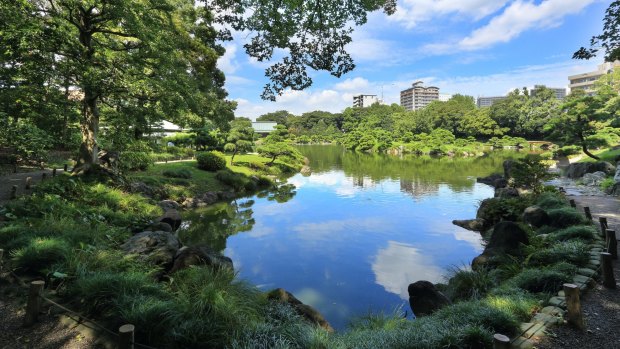
Credit: Go Tokyo
THEN Tokyo first adopted green building initiatives back in 2002 but the sustainability-focused bid for the 2020 Tokyo Olympics has inspired the entire country to work harder. Having drawn 88 per cent of its energy from fossil fuels in 2019, Japan is now aiming to achieve net-zero emissions by 2050.
NOW Tokyo's famous skyscrapers have become much more energy efficient under the city's strict emissions caps. Other policies include rolling out more bicycle lanes, introducing 15 kilometres of riverside promenades and opening 130 hectares of new parkland.
GO GREEN Get your bearings on an e-bike tour (tokyo-ebike.com) and then indulge in some guilt-free shopping. Head to Shimokitazawa and Koenji to browse the recycled clothing stores, then spend some time exploring some of Tokyo's expansive parks, such as Ueno Park or Shinjuku Gyoen National Garden.
STILL TO FIX Tokyo is planning to build a high-tech, carbon-neutral city called eSG on reclaimed land. The project is due to be finished by 2050.
MORE gotokyo.org
ROTTERDAM, NETHERLANDS
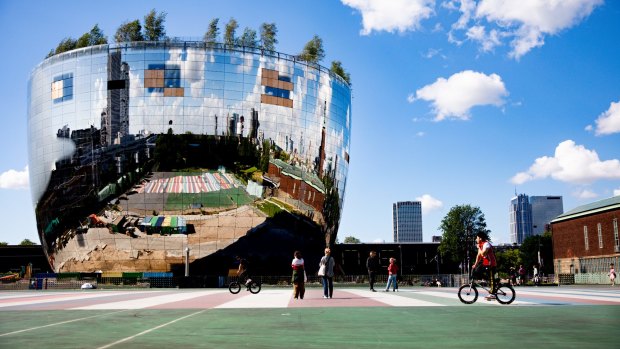
Credit: Iris van den Broek
THEN Rotterdam has a long history of innovation – the first skyscraper in Europe was built here. Its sustainability agenda has been aided by the decline of the city's port, which increased the number of vacant buildings available for experimental start-ups.
NOW Most of the city sits below sea level, giving an urgency to Rotterdam's aim to be climate-proof by 2025. Innovative projects include the world's first floating farm, a floating park and projects that capture rain during heavy weather events to prevent flooding.
GO GREEN Start with a visit to the aforementioned rooftop Dakpark (dakparkrotterdam.nl), then cruise the waters in an electric sloop from iKapitein (i-kapitein.nl). Learn more about the city's sustainability initiatives on a tour with City Rotterdam Tours (www.cityrotterdamtours.nl) and check in to an eco-friendly hotel: the best have been awarded the Gold Green Key (greenkey.global).
STILL TO FIX The city is investing in a swathe of new parks, include the seven-hectare Nelson Mandela Park to be built at Maashaven, as well as parks at Rijnhaven, around Hofplein, Westblaak, Hofbogen, and Prins Alexanderplein.
MORE en.rotterdam.info
SINGAPORE

THEN Singapore's centralised government has worked for decades to help green the densely-populated city through a range of policies, incentives and public awareness campaigns. Among the most visible changes was the increase in tree numbers, which leapt from 158,600 in 1974 to 1.4 million in 2014.
NOW Since green building standards were introduced in 2008, Singapore has been a world leader in low-impact high-rises. To encourage rooftop gardens and vertical greenery, the government funds up to half of installation costs.
GO GREEN Check into one of Singapore's ultra-green hotels, such as Parkroyal on Pickering (panpacific.com) or Oasia Downtown (oasiahotels.com), both designed by WOHA, a groundbreaking Singaporean-Australian eco architecture firm. Bring your hiking shoes and explore the Rail Corridor (nparks.gov.sg), a 24-kilometre trail connecting the city's best green spaces, including Bukit Timah Nature Reserve, Clementi Forest and Dairy Farm Nature Park, or take a farm tour - yes, really – at Bollywood Farms (bollywoodveggies.com.sg), where you can also eat at the on-site bistro.
STILL TO FIX By 2030, Singapore wants to reduce waste to landfill by 30 per cent and to have 20 per cent of schools be carbon neutral.
MORE visitsingapore.com
SAN FRANCISCO, US
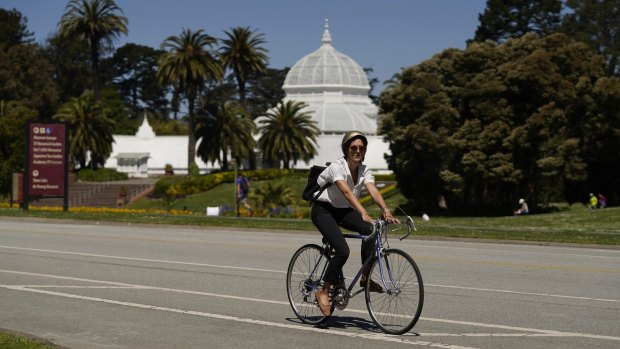
Credit: AP
THEN San Francisco has long been leading the way in sustainability and was the first US city to ban plastic bags in 2007, diverting 1.6 million tons of waste from landfill annually.
NOW San Francisco has the largest public transport system in the US and recycles 77 per cent of its municipal waste. It has reduced greenhouse gas emissions by 40 per cent from 1990 levels, despite growing its population by 22 per cent and its GDP by 200 per cent.
GO GREEN You can offset your carbon emissions as soon as you land at the airport, thanks to the Climate Pass carbon offset kiosks. Hire a bike or take a bike tour – try Bay City Bike (baycitybike.com) or Blazing Saddles (blazingsaddles.com) – and pay a visit to the fascinating Exploratorium (exploratorium.edu), a science museum housed in a net zero building.
STILL TO FIX San Francisco's mayor has just announced $2 million in grants for projects supporting the goal of reaching net zero emissions by 2040.
MORE sftravel.com
BERLIN, GERMANY
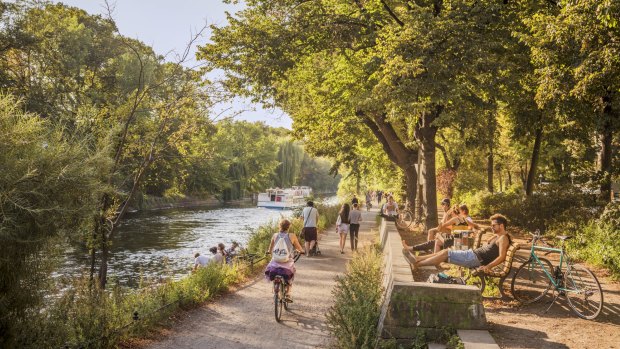
Credit: Dagmar Schwelle/Visit Berlin
THEN Berlin's reputation for innovation can be traced back to its days as a divided city, when alternative-living communities sprang up in West Berlin. After the city's reunification in 1990, a huge number of empty buildings provided the infrastructure not just for the city's famous nightclubs but also for a range of experimental spaces and start-ups.
NOW Berlin's emissions are already down 40 per cent from 1990, and a reuse and recycle culture is in place across the city.
GO GREEN Berlin's reputation as a cutting-edge metropolis leads people to underestimate how green this city is. Thirty per cent of the city area is dedicated green space, including 180 kilometres of navigable waterways - hop aboard the solar-powered SolarPolis boat for a canal cruise. Stop in at Naturkaufhaus (naturkaufhaus-gmbh.de), featuring 4000 square metres of sustainable products from handbags to toys to homewares, and Nochmall (nochmall.de), the world's first department store dedicated to secondhand goods.
STILL TO FIX Berlin has legislated the phasing out of coal-based power generation by 2030 and is working to be climate-neutral by 2045.
MORE visitberlin.de/en
VANCOUVER, CANADA
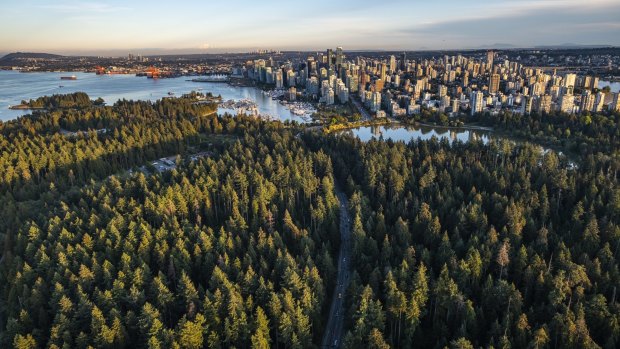
Credit: Destination Vancouver/Albert Normandin
THEN As you might expect from the birthplace of Greenpeace, Vancouver has a long history of thinking environmentally. The city started tackling climate change way back in 1990, using planning and development policies.
NOW Vancouver has scored some big wins, including strict building codes and reaching the goal of 50 per cent of all trips being made by sustainable transportation. It has also introduced municipal composting alongside the recycling program.
GO GREEN Start at Stanley Park where you can explore 400 hectares of rainforest, head to the beach or follow the walking and bike path along the water. Next stop is Granville Island (granvilleisland.com), home to a clutch of shops, restaurants and a fabulous food market, which operates on zero-waste principles. Grouse Mountain (grousemountain.com) is great for hiking in summer and skiing in winter, and the Grouse Mountain Wildlife Refuge runs a number of rehabilitation and captive breeding programs.
STILL TO FIX The city is aiming for zero waste status by 2040.
OSLO, NORWAY
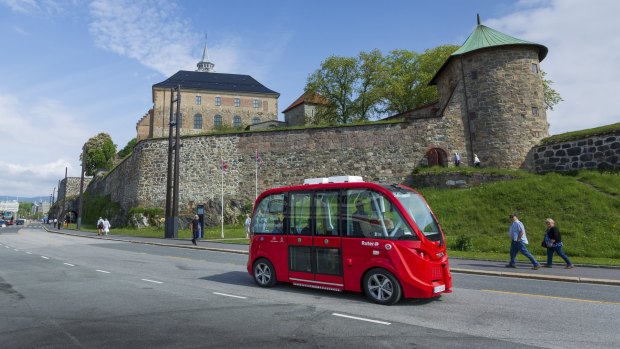
Credit: Didrick Stenersen/Visit Oslo
THEN Despite being one of the world's largest fossil fuel exporters, Norway relies almost entirely on hydropower for its domestic energy. At the 2021 national election, voters embraced a move away from fossil fuels, and Norway aims to be completely carbon-neutral by 2050.
NOW Electric vehicles made up more than 70 per cent of cars bought in Oslo in 2020, thanks to city policies that provide free parking, reduced tolls and bus lane access. The city has an annual climate budget which tallies carbon in the same way that the finance budget tallies money.
GO GREEN Two-thirds of the area within the city boundaries is forest, parks and lakes, so get out and active. Most of the city's hotels are eco-certified, as are the Norwegian National Opera & Ballet (operaen.no) and the Norwegian Maritime Museum (marmuseum.no). Even the new terminal at Oslo Airport has been built sustainably, with measures including collecting and storing snow in winter to cool the building in summer.
STILL TO FIX Oslo aims to makes its construction projects emission-free by 2025.
MORE visitoslo.com
ZURICH, SWITZERLAND
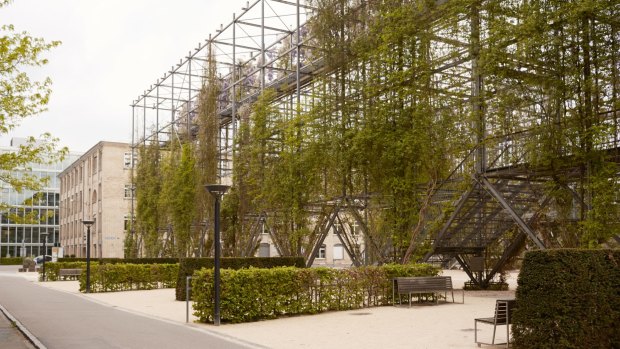
Credit: Switzerland Tourism/Elisabeth Real
THEN Switzerland has long placed an emphasis on mitigating environmental impacts and its largest city has been leading the way.
NOW Zurich's policies include strict clean-air measures, conservation of natural spaces, and a ban on additional car parking spaces in the city. The city has also encouraged innovation in architecture, from the Freitag Tower in West-Zurich, made of 19 rusting shipping containers, to the MFO-Park, where the frame of an old factory has been reborn as a vertical park, complete with walkways and balconies.
GO GREEN Choose a hotel that has been awarded a sustainability label – that's about half of the city's hotels. Join one of the e-bike tours run by the city (zuerich.com), then pay a visit to the ground-breaking, ever-evolving GreenCity Eco-Neighbourhood, designed to reduce each inhabitant's energy consumption from the average 6000W to 2000W.
STILL TO FIX Zurich plans to become climate neutral by 2040.
MORE zuerich.com
FIVE MORE ECO-SMART CITIES TO VISIT
LONDON, UK
Its ambitious targets include recycling 65 per cent of municipal waste by 2030, zero emissions from taxis and hire cars by 2033, and zero carbon emissions by 2050. See visitbritain.com
MYSORE, INDIA
Mysore has maintained extensive green spaces, recycles about half its solid waste into compost and has invested heavily in public transport. See incredibleindia.org
SEATTLE, US
Seattle has halved its carbon emissions while doubling its economy and has adopted a zero-emission vehicle standard that will see polluting passenger vehicles phased out by 2035. See visitseattle.org
HELSINKI, FINLAND
Eighty per cent of journeys in Helsinki are made by walking, cycling or public transport, and the city has some of the purest water and cleanest air in Europe. See myhelsinki.fi
CURITIBA, BRAZIL
City-wide public recycling, cheap public transport and a ban on cars in the city centre are just some of the ways this Brazilian city is leading the way. See visitbrasil.com
Sign up for the Traveller newsletter
The latest travel news, tips and inspiration delivered to your inbox. Sign up now.